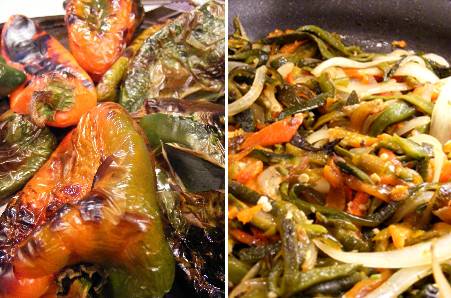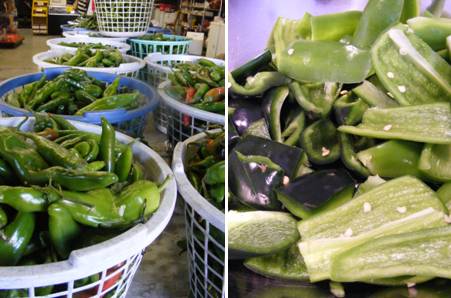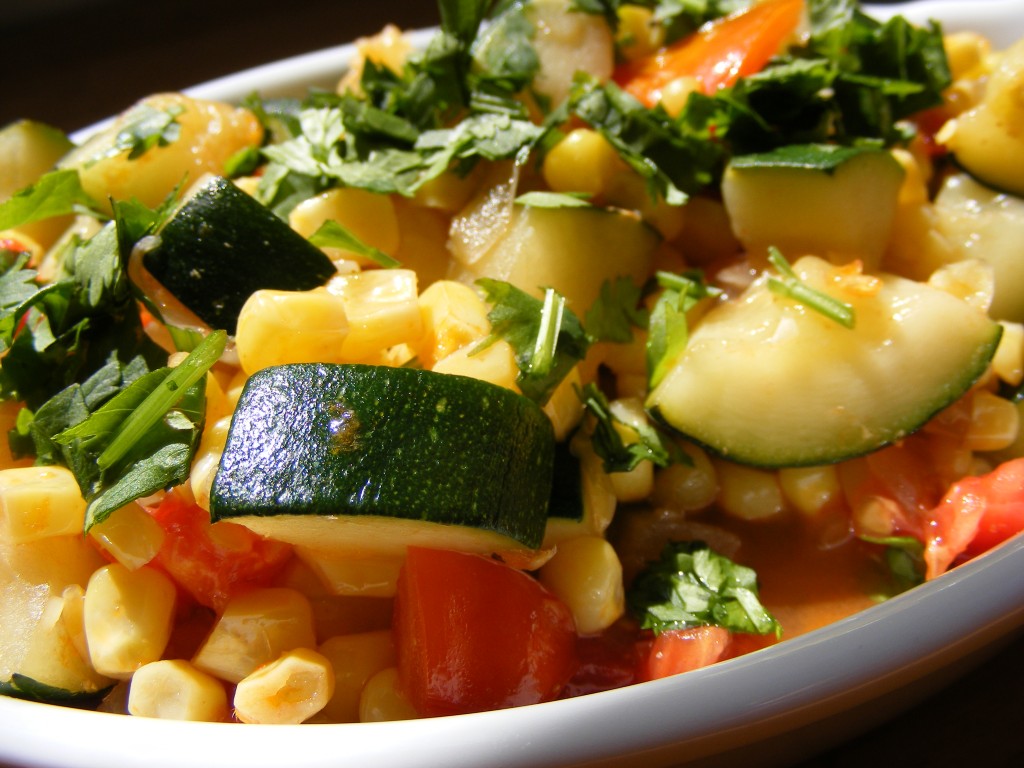Green Chile: Roasted Chile In Cream – Rajas Con Crema
Friday, October 30th, 2009This recipe is for all you cream sauce lovers. Rajas con crema is a winner – smoky, spicy chiles rounded by a simple rich cream sauce. And, it’s super easy to make, especially if you cheat and get your chiles pre-roasted.
The inspiration for this recipe came last month when I went to my friend Laura’s annual Mexican Independence potluck pachanga (party). That night I made my way to the food line one time too many – each time scooping a spoonful of rajas. Rajas con crema, literally translates to mean “slices with cream.” Aesthetically, it was the perfect dish for her party representing the colors of the Mexican flag, green and red from the roasted chiles and white from the onion. Gastronomically, it was scrumptious.
Here’s my version of rajas con crema using crema Mexicana, Mexican cream, to give it richness. It is thick and slightly acidic, definitely more decadent than regular sour cream.
I used roasted poblano chiles and, just to be sure it had enough kick, I also used a couple of roasted hot Hatch chiles. The ultimate result is a spicy creamy combo that is sure to please, either as vegetarian taco filling, a side with rice and beans or served on top of grilled chicken or steak (as pictured above).
Tidbits on Chile
- Chiles are believed to have originated in South America in an area bordered by the mountains of Brazil and Bolivia.
- Chile peppers are the most popular spice and condiment in the world, consumed daily by one-quarter of the world’s population.
- Raw green chile has more vitamin C than citrus fruits.
- Chile heat levels (capsaicin) is determined by a plant’s variety and the environment where it grows. The amount of capsaicin will increase under dry, stressful conditions.
Sources: Encyclopedia of Food and Culture and the Chile Pepper Institute of the University of New Mexico.








